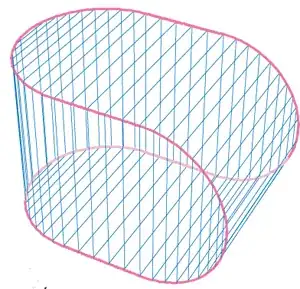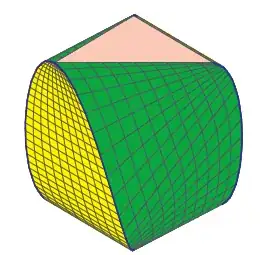Let $C$ be a smooth curve in $\mathbb{R}^3$ that lies entirely on its convex hull, $\cal{H}(C)$.
Under what conditions on $C$ is $\cal{H}(C)$ the union of developable surface patches?
I believe the patches are all ruled, but perhaps not developable?
Example 1. $C_1$ is the concatenation of four semicircles as shown below. The surface patches
are subsets of cylinders, or subsets of planes: developable.

Example 2. $C_2$ is the curve studied by Ranestad and Sturmfels in "On the convex hull of a space curve," (arXiv link), and earlier studied by Sottile (who made the image below): $$x = \cos(\theta)\;,\; y = \sin(2\theta)\;,\;z = \cos(3\theta) \;.$$

Status (to me) unclear, despite its superficial similarity to the "tennisball" curve $C_1$ above.